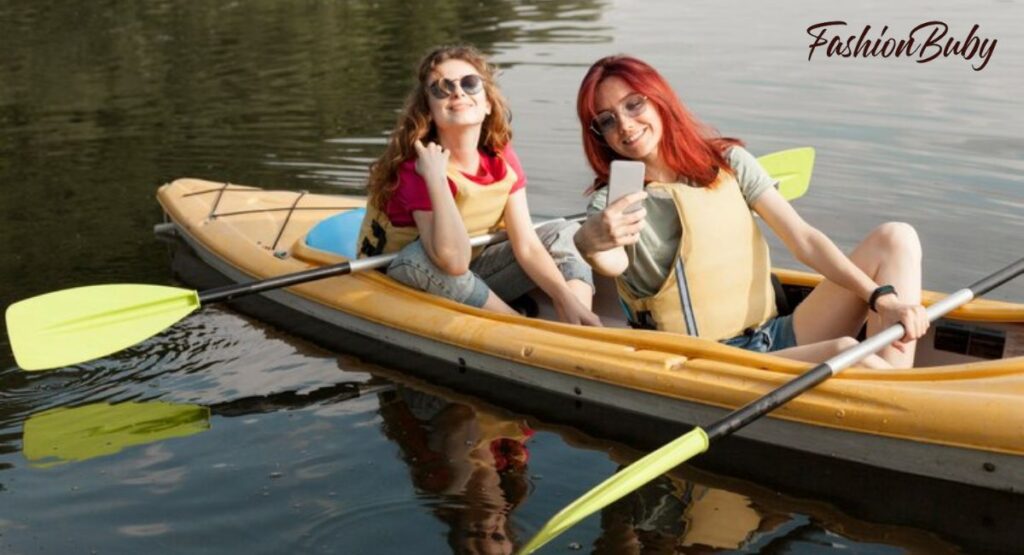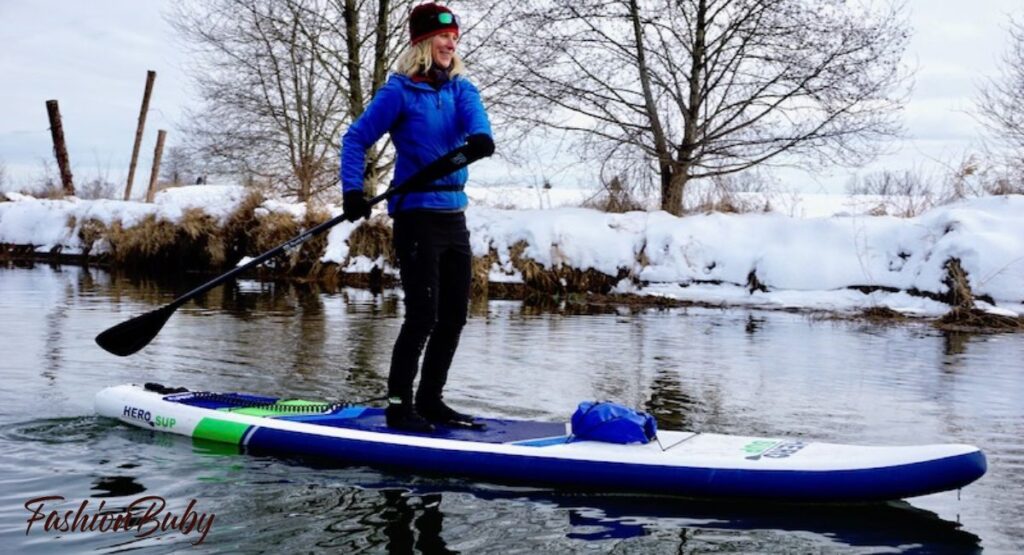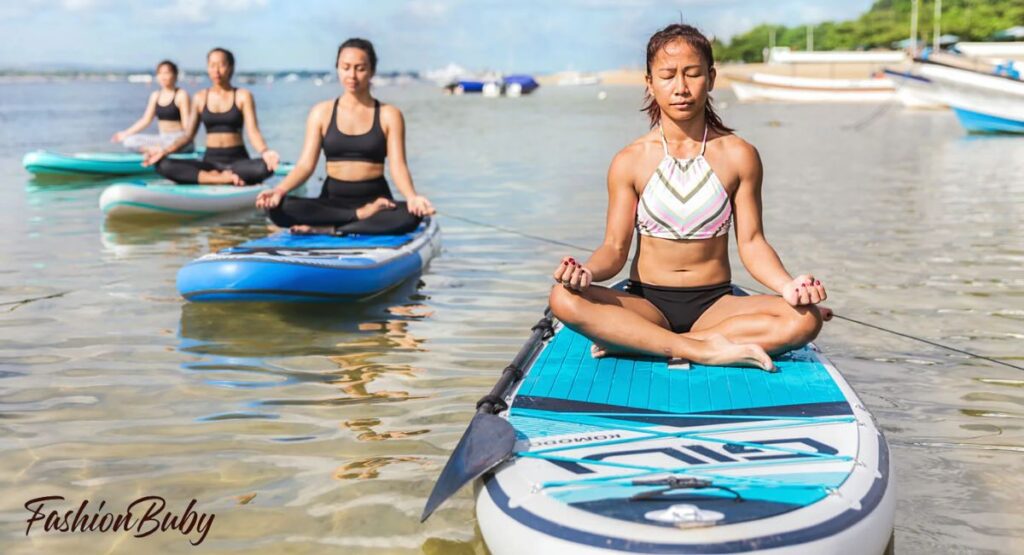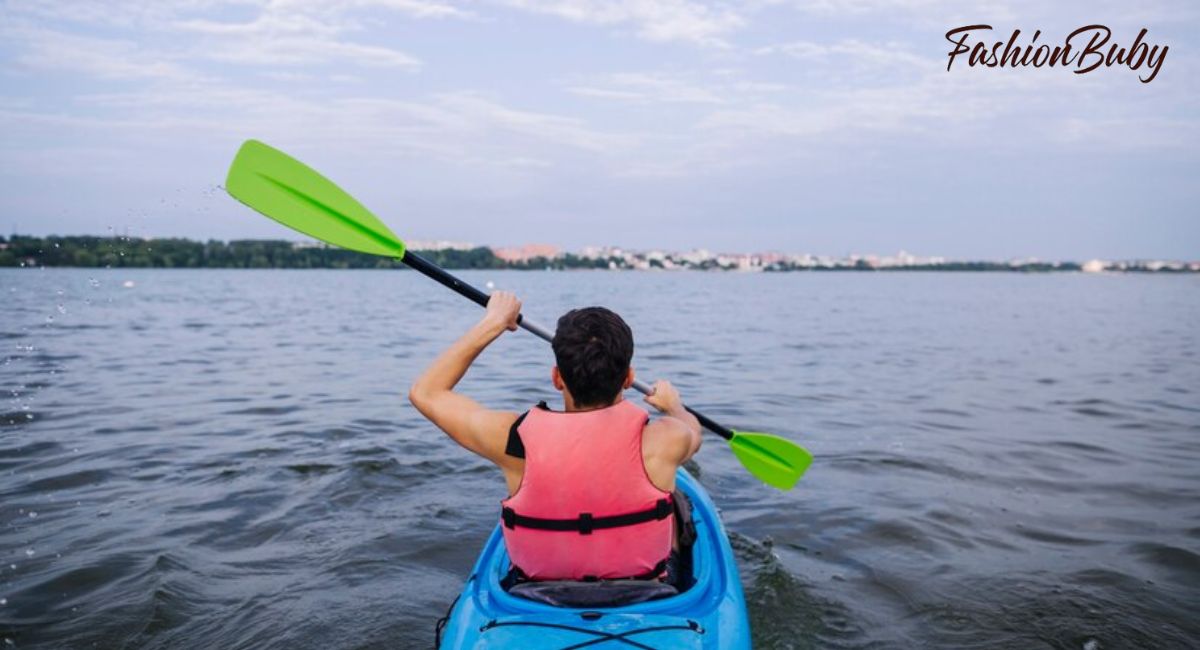Paddleboarding is a fun and adventurous activity. Wearing the right gear ensures comfort and safety. This guide will help you choose the perfect outfit for your paddleboarding experience.
Imagine gliding over crystal-clear waters, feeling the sun on your face. The right outfit can make your paddleboarding adventure even more enjoyable. Discover how to stay comfortable, stylish, and prepared for any conditions.
Wearing the right gear for paddleboarding keeps you comfortable and protected. From sun hats to waterproof backpacks, each item plays a crucial role in enhancing your experience.
What to wear when Paddle Boarding in the Summer?

In the summer, wear a lightweight, moisture-wicking shirt to stay cool. Quick-dry shorts or swimwear are perfect for comfort. Don’t forget a hat and sunglasses to protect against the sun.
Footwear is important; water shoes or sandals with good grip are ideal. They protect your feet from hot surfaces and sharp objects. Always apply waterproof sunscreen to exposed skin.
Bring a water bottle to stay hydrated. A small, waterproof bag can hold your essentials. This keeps everything dry and secure while you’re on the water.
Related post:http://Summertime Equestrian Outfit Guide
what to wear when paddle boarding in cold weather

In cold weather, wear a wetsuit or dry suit to stay warm. These suits insulate and protect against cold water. Layer with a thermal top for extra warmth.
Use neoprene gloves and booties to keep your hands and feet warm. A beanie or hat helps retain body heat. Always bring a change of dry clothes for after your paddle.
Personal Flotation Devices
Personal flotation devices (PFDs) are essential for safety on the water. They help keep you afloat if you fall in. Choose a comfortable, well-fitting PFD for paddleboarding. Always wear it, no matter your swimming skills.
Leashes for paddle Boarding
Leashes for paddle boarding are vital safety equipment. They attach you to your board, preventing it from drifting away if you fall. Choose a leash that is appropriate for your paddle board’s size and your skill level.
Read this also:http://Meditation Mantras: Unlocking Inner Peace and Power
What to wear when Paddle Boarding in the Autumn or Spring?
During autumn or spring, opt for a wetsuit or neoprene top to stay warm. These provide insulation against cooler water temperatures. Pair with quick-dry pants or leggings for comfort and flexibility.
Wear a windproof jacket to shield against chilly breezes. A brimmed hat protects from sun and wind. Don’t forget sunscreen, even on overcast days, to prevent sunburn.
What to wear when Paddle Boarding in the Winter?

In winter, wear a thick wetsuit or drysuit to stay warm in cold water. These suits provide insulation against low temperatures and keep you dry. Layer with a thermal rash guard for added warmth.
Protect your extremities with neoprene gloves and booties. These keep your hands and feet warm while paddling. A beanie or hood helps retain body heat and protects your head from cold winds.
What To Wear For SUP Yoga

What To Wear For SUP Yoga” refers to the attire suitable for practicing yoga on a Stand-Up Paddleboard (SUP). This activity combines the elements of yoga and paddleboarding, offering a unique and challenging experience on the water.
For SUP yoga, wear flexible and moisture-wicking clothing that allows for freedom of movement. Opt for comfortable yoga pants or leggings and a fitted top. Additionally, consider wearing a swimsuit underneath for added versatility. Avoid loose or baggy clothing that may impede movement or become uncomfortable when wet.
Do You Need Shoes for Paddle Boarding?
Shoes are not always necessary for paddle boarding. Many people prefer to go barefoot for better grip and connection with the board. However, water shoes or sandals with good traction can be useful for protecting your feet from hot surfaces or sharp objects.
What is paddle tennis?
Paddle tennis is a racquet sport that combines elements of tennis and squash. It is typically played on a smaller court with solid paddles and a depressurized tennis ball. Paddle tennis emphasizes strategy, agility, and quick reflexes, making it a popular recreational activity for players of all ages.
What to wear for paddle tennis
For paddle tennis, wear comfortable athletic clothing that allows for ease of movement. Opt for moisture-wicking materials to keep you dry and cool during gameplay. Sneakers with good traction are essential to provide stability and support on the court.
Feet Protection in the Winter
During winter paddleboarding, wear neoprene booties to keep your feet warm. These provide insulation against cold water temperatures and protect your feet from frostbite. Look for booties with thick soles for added warmth and traction on slippery surfaces.
Water Sport Shoes
Water sport shoes are designed for activities like paddleboarding. They are lightweight, quick-drying, and provide excellent traction on wet surfaces. Choose shoes with durable outsoles and supportive designs for comfortable and safe paddleboarding experiences.
Slip-On Water Shoes
Slip-on water shoes are convenient for paddleboarding, offering easy on-and-off functionality. They feature breathable materials and drainage holes to keep your feet dry and comfortable. Slip-on designs are versatile and suitable for various water sports activities.
Glove-Like Water Sport Shoes
Glove-like water sport shoes are designed to provide a snug and secure fit, similar to wearing gloves on your feet. They offer maximum flexibility and dexterity, allowing for precise movement while paddleboarding. These shoes often feature lightweight and breathable materials, making them comfortable for extended wear on the water.
What other SUP clothing or equipment should I bring?
Your cool-weather paddleboarding outfit should include:
Change of clothes: Dry, comfy clothes with soft fleece feel great after a wet, chilly day.
Sunglasses: Shield your eyes from the sun’s glare off the water.
Sun hat: Protect your face and neck with a UPF-rated hat.
Small cooler: Relax with a cold drink or snack while sitting on your board.
Water bottle: Stay hydrated by bringing plenty of drinking water.
Waterproof backpack: Keep your wallet, keys, phone, and other items safe and dry.
Sunscreen: Apply UPF sunscreen to areas not covered by clothing.
Frequently Asked Questions
Can you wear normal clothes paddleboarding?
Yes, you can wear normal clothes paddleboarding, but it’s recommended to wear moisture-wicking materials for comfort and quick drying. Avoid wearing bulky or restrictive clothing that may hinder movement.
Do you need a swimsuit for paddle boarding?
No, you don’t need a swimsuit for paddle boarding, but it’s advisable to wear one underneath for added versatility, especially if you plan to swim or fall into the water. Opt for moisture-wicking swimwear that allows for freedom of movement.
Can you paddle board without a wetsuit?
Yes, you can paddle board without a wetsuit, especially in warmer weather conditions or if you’re not planning to fall into the water. However, wearing a wetsuit can provide insulation and protection in colder water temperatures.
Do you wear shoes to paddleboard?
While not always necessary, wearing shoes can provide traction and protect your feet from hot surfaces or sharp objects while paddleboarding. Many people prefer to paddle barefoot for better grip and connection with the board.
How cold is too cold for paddle boarding?
It’s generally too cold for paddle boarding when water temperatures drop below 50°F (10°C), increasing the risk of hypothermia. Use caution and consider wearing a wetsuit or drysuit in colder conditions.
How do you stay warm on a paddleboard?
To stay warm on a paddleboard, wear appropriate clothing such as a wetsuit or layers of moisture-wicking materials, and consider using neoprene accessories like gloves and booties. Additionally, paddle in sheltered areas and stay active to generate body heat.
How should I dress for a SUP in the winter?
Dress warmly for winter stand-up paddleboarding by wearing a thick wetsuit or drysuit to insulate against cold water. Layer with thermal clothing and use neoprene accessories like gloves and booties for added warmth and protection.
Conclusion
Paddleboarding offers a thrilling blend of adventure and relaxation, whether you are gliding across serene waters or practicing yoga on a SUP. Wearing the right gear is essential for comfort, safety, and enjoyment during your paddleboarding experience. From lightweight summer attire to insulated winter wetsuits, choosing the appropriate clothing and equipment ensures you’re prepared for any season or condition on the water.
Whether you are a beginner or a seasoned paddler, following these guidelines will help you stay comfortable, protected, and fully immersed in the beauty of paddleboarding, creating unforgettable memories on the water.












